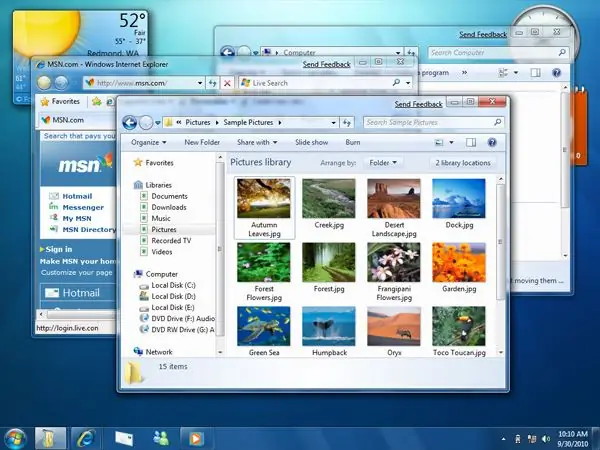The taskbar is the strip along the bottom of the screen that contains the Start button, Quick Launch, and notification area. In addition to them, open programs and documents are displayed in the middle of the taskbar. The set of elements placed on it can be changed. You can also change its size and position on the screen.

Instructions
Step 1
Move the mouse cursor over the inner border of the taskbar - the one that is closer to the center of the screen. When the cursor icon changes to become a double-headed arrow, hold down the left button and drag the border in the desired direction. This way you can change the width of the panel.
Step 2
If you cannot expand or narrow the taskbar strip in this way, right-click its free space. In the context menu that will appear as a result, there is a line "Dock the taskbar". If there is a check mark next to this item, then click it to remove the check mark. Then try changing the panel width again.
Step 3
If the taskbar width remains too wide even when the dock function is disabled, check if the icons are set to large size in the Quick Launch settings. To do this, right-click it and open the top section - "View" in the context menu. There should be a check mark next to the item "Small icons". If it's not there, click that menu bar.
Step 4
If, after all this, the icons on the taskbar are lined up in two rows (in the upper - the icons of the Quick Launch, in the lower - open windows), try the next method. Move the mouse cursor over the border of the bottom row of icons closest to the "Start" button. When the cursor icon becomes a double-headed arrow, hold down the left mouse button and drag it to the level of the first row icons. You need to drag it closer to the notification area at the far right of the taskbar. When you release the left button, the icons should line up with the Quick Launch icons on the left and open window shortcuts on the right. Then you can adjust the width of the taskbar in the usual way.
Step 5
There are other operations that resize the taskbar along with all other Windows GUI elements. For example, you can change the scale of all elements by changing the screen resolution. And you can only change the scaling of fonts, and the size of the graphic elements will also change.






